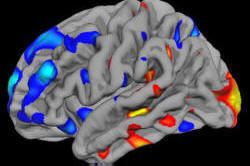Teaching reading: the essentials

Almost all lessons require the learners to read at
some point. Often, this reading is used to introduce some lexis,
to kick-start a discussion or focus on a grammar point. However,
reading skills in themselves should also be a central focus for a lesson
or series of lessons.
Much of what follows assumes you have followed
the guide to what reading actually is.
 |
Using reading texts: TALO vs. TAVI |
TALO and TAVI are terms coined by Johns and Davies (1983) and mean:
- TALO: Text as a Linguistic Object
- In this approach a reading text is used purely for language
input. It may contain, for example, grammatical items which
form the target of this part of the teaching programme or lexis in a
particular field of interest to the learners.
The approach involves mining the text for these language items (with most of the hard digging done by the teacher, usually) and then focusing on them for further clarification and practice. Examples of tasks using texts for this purpose will include activities such as:
Find and underline all the words in the text to do with crime and divide them into three lists: person who does the crime, the crime and the verb
Find all the ways in the text where the writer is recommending what should happen next. Make a list from strongest to weakest suggestions.
This is not using the text to develop reading skills, of course, except incidentally. - TAVI: Text as a Vehicle for Information
- In this approach, the text is being used to develop the
strategies that learners need to deploy to unlock the writer's
meanings and attitudes. The theory is that this approach will
lead to the development of cognitive strategies which learners can
then use independently to access the meaning of any text they
encounter.
It is a TAVI approach that is considered here because we are concerned with language skills rather than language systems development.
 |
The aims of a reading programme
Before we go on, can you make a note of what you believe should be the
target of a reading programme in terms of enabling our learners? |
The aims of a reading programme are to enable our learners to read:
- authentic texts
- without help
- at appropriate speed
- silently
- and with adequate understanding
That's the eventual aim. Here are some ideas for getting there.
All of the following can be done with paper-based materials
and internet sites. In fact, scanning is a key skill when
accessing internet sites because it is here that people are most often
looking for explicit information.
Wikipedia articles are very useful for these exercises if chosen with
care and sensitivity to the interests and levels of your learners.
 |
Skimming |
The aim of these skimming exercises is to train students to follow simple skimming steps. These are:
- Read the title. It's often a short summary of what's in the text.
- Read the first paragraph. It often sets out what questions are to be answered in the text.
- Read the first line of each following paragraph only.
- Read the last paragraph completely. It often summarises the whole text.
You can't just tell people to do this; we have to train students
and give them the skills they need to succeed.
All these exercises and tasks should be done with a clear time limit set
for their completion. If you don't do this, learners will often
fall back on trying to read and understand every word. The intent
is to force them to skim the text for essential information.
- Matching exercises:
On the board / projector put 4 headlines or titles, three of which would be suitable for a set of three texts.
Set a short time limit to match the headlines / titles to the texts.
Hand out texts to everyone in the class. - Multiple choice exercises:
Use a longer reading text of at least 5 paragraphs.
Prepare 4 alternative summary sentences for each paragraph containing the paragraph's main idea.
Set a time limit to match the correct summary sentences to the paragraphs. - Topic sentences:
Prepare a text by removing the first sentence of each paragraph except the first and last paragraph.
Hand out the text and the topic sentences separately and get students to match topic sentence to paragraph. - Raising awareness of text structure and where
to look for information:
Find a text (or write one) which has a clear structure with signposts such as Firstly, Secondly, In summary etc. and also has a clear first line which addresses the content of the text.
Chop the text up into paragraphs and get the students to work together (with the usual time limit) to put the paragraphs in the right order.
 |
Scanning |
The aim of these exercises is to give the learners the skills they need to follow these scanning steps:
- Having a question or questions to answer firmly in mind before starting to read.
- Think about what the information is that you need. Is it a name, a number, a place? etc.
- Skim the text to get an idea of its structure. If there are subheadings in the text, read them carefully.
- Run your eyes along the text looking ONLY for the kind of data you need.
- When you find a candidate sentence, read it intensively to extract the information.
- Descriptive texts:
Find a text which describes a person or a location and contains data such as names, numbers, places and dates.
Hand out the text face down to the students.
On the board / projector put up questions one at a time such as
Where was he born?
When did he die?
What was his wife's name?
etc. and get the learners in a race to turn over the text after each question to find the answers. You can also read out the questions, of course, but it's useful to have them written down because it focuses the learners. - Narrative texts:
Short stories or diary entries are useful for this exercise.
Proceed as above but this time the questions refer to the sequence of events in the story such as
What happened after he left the army?
Where did she go when she left her husband?
etc. - Information texts:
Hand out something like a TV guide magazine, a local information newspaper, a holiday brochure etc.
Set questions as above but this time focusing on the sorts of information your students might realistically need: times of TV shows, prices, venues etc., such as:
What time is the news on?
Which film is showing at the Multiplex?
How far is the hotel from the airport?
etc.
 |
Intensive reading |
Intensive reading is done for full understanding of (usually) a short
text. It is what we do when, e.g., we have scanned a text and
found the section with the information we need so the following can be
combined with scanning (above).
The skills involved in being able to infer the meaning of unknown words
are crucial in this area so if you haven't already been there, look at
the ideas in
the guide to teaching vocabulary.
- Synonym matching:
Select some key vocabulary from a reading text and invent synonyms. Be careful to keep the word class consistent and make the synonyms easier than the items in the text. For example, if the words in the text are incandescent with rage make sure that your synonym is a) an adjective and b) easier to understand. Choose, therefore, something like extremely angry rather than burning with ire.
Learners need to scan the text to find items which match the word class they are looking for and then read intensively to locate the precise meaning they are looking for.
For a little more on the perils of synonym tasks, see the guide to synonymy. - Multiple-choice exercises:
These are frequently used in examination of reading skills.
Select questions which force the learners to focus on key parts of the text to read intensively. Don't try to test everything.
Make sure only one answer is correct but ensure that the 'wrong' answers are not daft. If the learners can dismiss any of the alternatives because they make no logical sense, you aren't developing intensive reading skills. - Spot the error:
Focus on particular word classes for this task.
Remove, say, 10 adjectives from a text and replace them with adjectives that make no sense. So, e.g., if the original text had
He was absolutely delighted with the beautifully cooked meal
replace it with something like
He was absolutely horrified by the beautifully cooked meal.
The task, obviously, is for students to read the text intensively and spot the non-sequitur expressions, replacing them with something more logical. At the end, they can compare their suggestions with the original text.
This kind of task can also be used to focus on grammatical non-sequitur items by replacing, e.g.
Even when he was on holiday last year he would check his work email every morning
with
When he was on holiday last your he may check his work email every morning.
 |
Extensive readingThe best way to improve your knowledge of a foreign language is
to go and live among its speakers. The next best way is to read
extensively in it. |
Reading extensively for pleasure is a great learning aid so the more we can encourage it,
the better.
The issue here is often one of level. Many learners (and their
teachers, regrettably) assume that lower level learners are unable to
read extensively in English but there are actually a number of resources
that they can access, not least the large number of commercially
published graded readers. Here's a list of some frequently used
resources:
- Black Cat Readers
- Cambridge Readers
- Easy Readers
- ELI Publications
- Macmillan Guided Readers
- Oxford Bookworms
- Penguin Readers
- Scholastic Readers
Many learners may be reluctant to read extensively so a little encouragement is needed. Reasons for reluctance might include:
- Past experience of encountering demotivatingly difficult texts
- so make sure you select texts at the right level
- Difficulties accessing Latin-script texts
- so ensure that the texts you present do not use quirky or unusual fonts and are in large enough type
- Lack of experience in the first language of reading more than
the label on a tin or a text message
- so select texts (or get the learners to select texts) which appeal to their particular interests
- No discernible purpose or outcome
- so make sure that you start something like a reading circle so the learners do something (discuss, summarise, recommend, review etc.) with the texts they have read
- Not knowing where to start and what to read
- so set up a small class library with a range of readers at the right level and get the learners to read one a week or so.
| Related guides | |
| teaching reading | for the in-service guide to the area which is more detailed |
| pages for learners | click through to reading exercises or reading lessons. You can incorporate the materials into your own lessons |
| inferencing | for some help with how we figure meaning from context and co-text |
| synonymy | for more words with similar meanings and the perils of assuming they are the same |
| teaching vocabulary | for the in-service guide to teaching meaning |
| reading | for the guide to what the skill involves |
Reference:
Johns, T. and Davies, F., 1983, Text as a
vehicle for information: the classroom use of written texts in teaching
reading in a foreign language, Reading in a Foreign Language 1/1:1-19.
References you may find helpful
include:
Alderson, J C, 2000, Assessing Reading, Cambridge: Cambridge
University Press
Bamford, J & Day, RR (eds.), 2004, Extensive Reading Activities
for Teaching Language, Cambridge: Cambridge University Press
Grellet, F, 1981, Developing Reading Skills, Cambridge:
Cambridge University Press
Hudson, T, 2007, Teaching Second Language Reading, Oxford:
Oxford University Press
Nuttall, C, 1996, Teaching reading skills in a foreign language,
Oxford: Heinemann English Language Teaching
Sanderson, P, 1999, Using Newspapers in the Classroom,
Cambridge: Cambridge University Press
Urquhart, AH & Weir, CJ, 1998, Reading in a Second Language:
Process, Product, and Practice, Harlow: Longman
Wallace, C, 1992, Reading, Oxford: Oxford University Press
